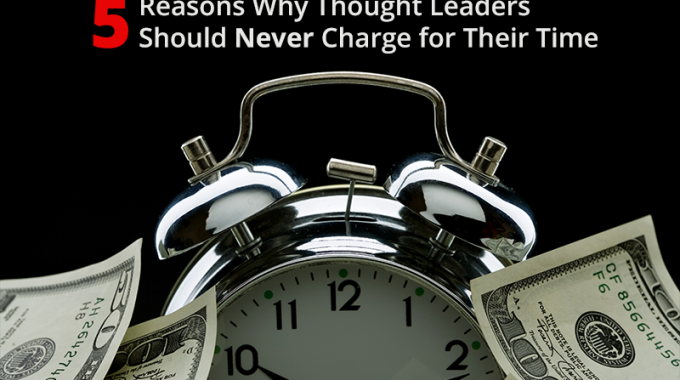Don’t build product in a vacuum! The best way to create a product that will…
There Is a Market for Commodities, There Is No Market for Ideas.
 What’s the market value of a good idea? In my experience it’s pretty much a big fat zero. You can easily figure out the value of commodities like flour, oil, CPU’s and the like. It’s not a particularly profitable side of the supply chain but a market certainly exists. Take flour, the current price of flour (wholesale) is about 30 cents a pound. You’d have to sell an awful lot of flour to have a viable business. However if you’re a baker flour is a key ingredient in the cakes and pastries that you create. A high end cake may cost $3,000 and weigh about 60 pounds and serve 100 to 150 people. That sounds like a better business to me. (Is anyone else addicted to “Cake Boss” these days?) Sure you’ve got to add other ingredients and have specific skills and some marketing ability and equipment and tools to be able to produce a $3,000 cake but you would only do so for two reasons:
What’s the market value of a good idea? In my experience it’s pretty much a big fat zero. You can easily figure out the value of commodities like flour, oil, CPU’s and the like. It’s not a particularly profitable side of the supply chain but a market certainly exists. Take flour, the current price of flour (wholesale) is about 30 cents a pound. You’d have to sell an awful lot of flour to have a viable business. However if you’re a baker flour is a key ingredient in the cakes and pastries that you create. A high end cake may cost $3,000 and weigh about 60 pounds and serve 100 to 150 people. That sounds like a better business to me. (Is anyone else addicted to “Cake Boss” these days?) Sure you’ve got to add other ingredients and have specific skills and some marketing ability and equipment and tools to be able to produce a $3,000 cake but you would only do so for two reasons:
1) There’s a distinct market. People buy cakes.
2) It’s profitable. The margins on a $3,000 cake are in excess of 60%.


So what does that have to do with ideas? Everything. I work with a wide variety of authors, gurus and thought leaders. The key asset for each of them really boils down to their ideas. The challenge is that ideas have no distinct market and are not very profitable. That is the challenge that I help them solve. There are a several factors that need to be taken into account, and of course every situation is a bit different but there are several key questions that anyone with an idea needs to be able to answer to determine how to monetize the idea effectively.
Who is the market that you are going to serve? A big red flag for me is when a potential client believes that their content is “great for everyone” or “it’s a universal concept or methodology”. You simply cannot be all things to all people. For example if your content is something that would have great impact on a Fortune 500 company there are a lot of ways to convert the content into modalities that those type of companies buy and pay a premium for. Engagements of $500,000 to $5,000,000 and more are quite common. You simply cannot simultaneously attempt to either give the content away to a different market or package and price it so that consumers can buy a version of it at Target for $39. You would also need two very different infrastructures to develop, market, sell and service these two very different types of buyers. Stay focused, razor focused when it comes to choosing the market for your content.
What is your product roadmap? Once you’ve decided on the right market the next issue is deciding on a format or modality and having a well defined product roadmap. There a key strategic issues to wrestle with during this phase that have impact on your content, your brand and the health of your business over the long term. In fact I’d argue that if more authors spent time crafting a logical product roadmap PRIOR to writing their books and going out on the speaking circuit they would be exponentially more successful.
Are you in control of your platform strategy? In order to have a platform strategy you need obviously have a clearly defined platform. Seems pretty straightforward doesn’t it? At the risk of sounding like a consultant, the answer is, it depends. You own your ideas, you are in control of what happens to them and you need to have a vision around what that looks like. You also need to have the courage to say no to agents, publishers, clients, partners and others if opportunities presented to you are not aligned with the strategy. The biggest mistake I have seen is that clients let others control their destiny by not having a platform strategy that they can rely on to help them take advantage of opportunities at a time that is optimal for them as opposed to their publisher, agent or others.
So until there’s a NASDAQ or Ebay for ideas you are going to have to be as smart about the markets you focus on, the products and services that you offer and have the discipline to develop a strategy to insure that your ideas can change the hearts and minds of those you choose to serve.
Napolean Hill said it best, “Ideas are the beginning points of all fortunes.”
Comments (4)
Comments are closed.





Great post. I have a friend that I will refer to you who loves to write about roadmapping. This was a post that I think will inspire him to keep on with his budding blog.
great post. One single point where I beg to differ. ‘So until there’s a NASDAQ or Ebay for ideas ‘ – I don’t think there is a nead for a market for ideas. Great ideas will always become future companies (example Intel, google,Yahoo!, etc) so why sell the idea of search engine (google) and not try to take the idea to the market (NASDAQ) through a company!. Kind of Columbus’ egg.
Hmmm….that picture at the top of your post looks familiar….
Interesting post. Good illustration of how intangibles contribute to margin. Coke is a similar example. Water is cheap. Add a recipe, some capital equipment and know how (marketing & mixology) and you have a high margin product that supports a muti-billion valuation that is more than 70% intangible. Indeed, NASDAQ and NYSE are increasingly markets based in part on ideas, or more accurately the application of ideas, with total market caps being mostly attributable to intangibles.
Snapchat is almost entirely intangible. Why is it valuable?
It looks like I could use your help with Social Capital Value Add (www.socialcapitalvalueadd.com). Cdling.com is a market for the exchange of ideas, more accurately market for discretion.